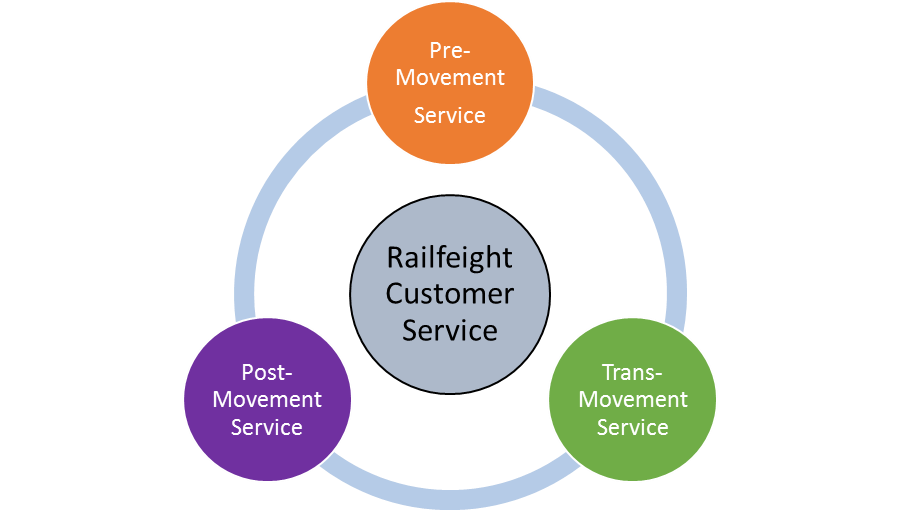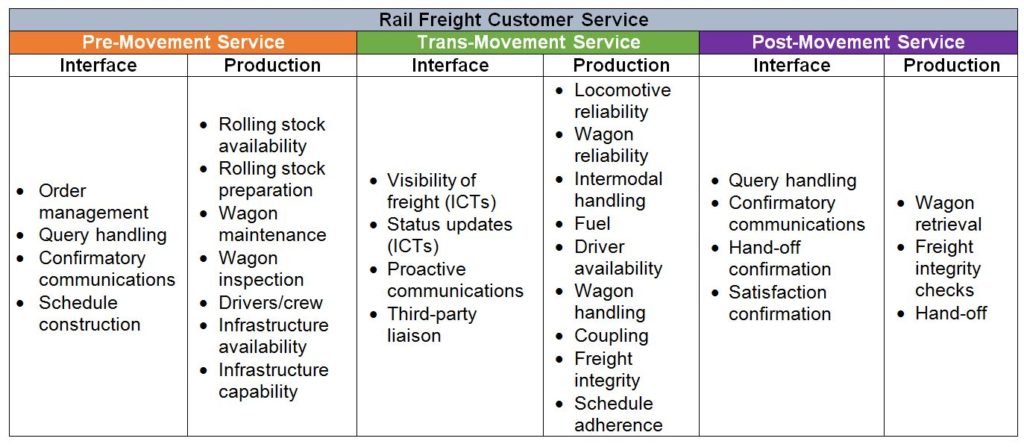Customer Service as Rail Freight Value-Driver
When business is acquired, the customer interface priority moves from attraction to provision of service quality. The longevity of the business relationship is contingent on the continuous and consistent delivery of the service in the form promoted in the enticement/attraction stage (1. and 2.).
Whether the freight is traditional (i.e. rail-suited) or novel (multimodal-suited), quality/value in rail freight customer service can be divided into three phases of activity, which are depicted as the following trinity.

In the Pre-Movement phase of customer service, the rail freight provider communicates to the customer confirmatory details regarding collection and delivery, and informs the customer in advance of any changes to schedule or provision and any other relevant information. In terms of production, pre-movement customer service comprises the sustained readiness of suitable rolling stock and facilities, drivers and marshalling crew, the availability of train paths, and the general proficiency of logistical management.
In the Trans-Movement phase, customer-accessible real-time, ad hoc visibility of freight in transit constitutes the ideal capability. If customers are able to access progress updates freely and directly (from desktop or mobile ICTs), they are able to communicate arrival estimates to their customers – potentially an order-winning capability, especially if the customer has won business on the basis of an attractive delivery window or is supplying a JIT-operating manufacturer. The readiness of the receiving handlers can be timed, increasing operational efficiency for both transporter (fuel/time) and receiver (reduced labour costs and increased handling crew preparedness). In production terms, the trans-movement phase is signified by reliability, most simply exemplified in acceptably low risk of interruption due to internal risks such as driver shortage, mechanical failure, and freight mishandling.
The Post-Movement phase involves communication of details of delivery and receipt. Persons responsible for confirming receipt can feed forward any issues regarding the load and its handling or unloading. At this point, order correction can occur. Having early information allows the seller time to address mistakes and communicate promptly with dissatisfied customers, and to rapidly initiate reverse logistical processes if necessary. This too constitutes a key value-driver, since these are technological advantages that the rail freight customer can offer to their customers. The operational dimension of post-movement customer service consists of safe, punctual handover of freight in a state that meets the expectations or requirements of the receiving party.
The interface and production activities of each of the three phases of customer service are summarised in the table below.

